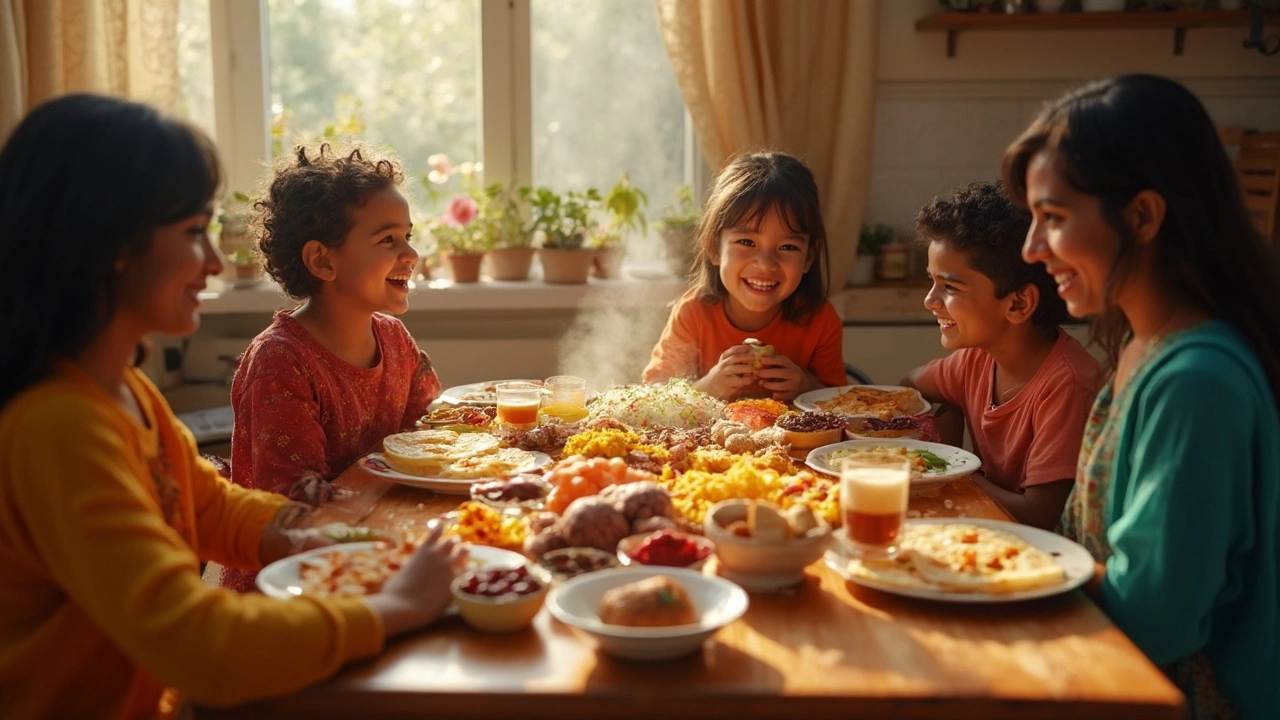Most Eaten Indian Food: What Indians Keep On Their Plates
Ever wondered what the Indian kitchen looks like on a typical weekday? It’s not just fancy biryani or festival sweets – it’s a handful of staples that show up at breakfast, lunch, and dinner. Think fluffy roti, steaming rice, protein‑rich dal, and the occasional spicy snack. These dishes are cheap, easy, and flavor‑packed, which is why they’ve become the backbone of Indian meals.
Below, we break down the top‑five dishes that you’ll find on most Indian tables, why they’re so popular, and quick ways you can make them at home without a big time commitment.
Why These Dishes Rule the Table
1. Roti (or Chapati) – Whole‑wheat flatbread is the go‑to side for almost every meal. It’s cheap, cooks in minutes on a hot tawa, and soaks up curries perfectly. Because it uses just flour, water, and a pinch of salt, families can squeeze out a batch even on a tight budget.
2. Rice – Whether it’s plain steamed basmati, fragrant lemon rice, or a quick pulao, rice fuels millions of households. It’s easy to store, cooks in one pot, and pairs with everything from sambhar to butter chicken.
3. Dal – Lentils, split peas, or beans boiled and tempered with mustard seeds, curry leaves, and chilies. Dal provides protein for vegetarian diets and can be customized with spinach, tomatoes, or coconut milk. It’s the pantry hero that lasts for days.
4. Biryani – Though it’s a festive dish, biryani shows up a lot in urban take‑out orders and weekend family meals. Layered rice, meat or vegetables, and a blend of spices make it a flavor powerhouse. Its popularity is evident in surveys about the most‑ordered food across India.
5. Street Snacks (like Samosa, Vada Pav, and Pani Puri) – When the hunger pang hits between meals, these bite‑size treats take over. They’re cheap, portable, and satisfy cravings for crunch and spice. Many vendors sell them early in the morning, making them a regular part of daily eating patterns.
How to Cook the Classics at Home
Want to bring these everyday favorites to your kitchen? Here are simple steps that fit into a busy schedule.
Roti in 5 minutes – Mix 1 cup whole‑wheat flour with a pinch of salt. Add water gradually until you get a soft dough. Let it rest for 10 minutes, then roll into thin circles. Cook on a hot tawa, flip once, and press gently with a cloth for a puff.
Speedy Rice – Rinse 1 cup rice, soak 5 minutes, then cook with 1.5 cups water. For extra aroma, add a few drops of ghee and a cinnamon stick. Fluff with a fork once done.
One‑Pot Dal – Rinse ½ cup lentils, add 2 cups water, a pinch of turmeric, and a dash of salt. Bring to a boil, then simmer until soft (about 20 minutes). In a separate pan, heat oil, toss mustard seeds, curry leaves, chopped garlic, and dried red chilies. Pour this tempering over the cooked dal, stir, and serve.
Easy Biryani Shortcut – Use pre‑marinated chicken or mixed veggies. Par‑boil rice with a few cloves and bay leaves. In a deep pan, layer rice and meat, sprinkle biryani masala, fried onions, and a splash of yogurt. Cover tightly and let it steam on low for 15 minutes.
Quick Snack Fix – For samosa, use store‑bought pastry sheets, fill with spiced potato‑peas mix, and deep‑fry until golden. For a healthier twist, bake at 200°C for 20 minutes. Pani puri can be assembled with ready‑made puris, boiled potatoes, chickpeas, and tangy tamarind water.
These dishes aren’t just popular because they’re tasty; they’re also adaptable, budget‑friendly, and rooted in tradition. By mastering a few basics, you can enjoy the same flavors that Indian families eat every day, no matter where you live.
So next time you’re planning a meal, think about the staples that dominate Indian tables. Grab some flour, lentils, and spices, and start cooking the foods that truly define everyday Indian cuisine.
Most Eaten Indian Food: Quick Breakfast Winners in India
Wondering what most people in India actually eat for breakfast? Dive into the everyday breakfast choices you’ll spot in countless Indian homes. Discover what makes these dishes so popular, from their taste to how easy they are to whip up on busy mornings. Get tips for making these morning classics fast and tasty. Find out which breakfast food truly wins the popularity race across the country.
